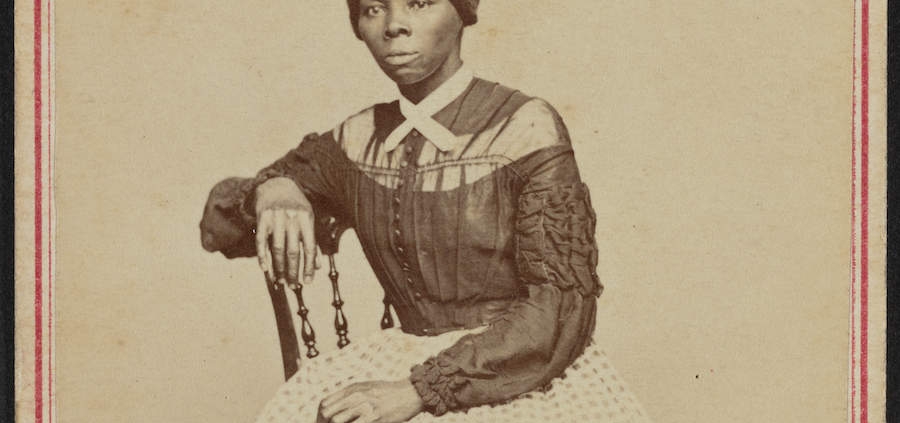Breaking Free: A Review by Chris Byrd
Harriet
Directed by Kasi Lemmons
Written by Kasi Lemmons and Gregory Allen Howard
Focus Features
PG-13 2 hours, 5 minutes
Watching the soul-stirring new film Harriet, it may astonish viewers to realize this is the first feature movie about the formidable and exceptional American abolitionist Harriet Tubman (c. 1822–1913). But perhaps we’ve been waiting for the phenomenal Cynthia Erivo to inhabit the title role she seems born to play.
African American female director Kasi Lemmons (Eve’s Bayou) helms Harriet from a script she cowrote with Gregory Allen Howard (Remember the Titans). The narrative concentrates upon Tubman’s journey to freedom and the liberation of her people as their Moses on the Underground Railroad.
We first encounter the slave known as “Minty” in 1849 amid an epileptic seizure in a sunlit field outside the Brodess plantation in Cambridge, Maryland, on the state’s eastern shore. Precipitated when a slave master inadvertently hit the adolescent Tubman in the head with a metal weight meant for his runaway, these seizures nonetheless blessed the future leader with divine visions, which showed her way forward.
When her husband John Tubman (Zackary Momoh) comes upon Minty, he flourishes a legal document intended to allow her to live freely with her already free husband. But in plantation owner Edward Brodess’s (Michael Marunde) view, the paper is immaterial. Soon before his own demise, the estate’s patriarch determines to sell Minty, and she resolves to run away with her pastor Reverend Green’s (Vondie Curtis-Hall, the director’s husband) help. “Follow that Northern Star,” he says, “and, if there are no stars, then follow the river.”
At the Choptank River Minty encounters her chief and longtime adversary, Edwin Brodess’s son Gideon (Joe Alwyn), who now believes he controls Minty’s destiny. He acknowledges she’s his “favorite slave,” and it is intimated that Gideon’s concupiscence informs his treatment of Minty. But perhaps because she won’t relent, Gideon also regards Minty as a pig. When he corners her on a bridge, before she jumps into the river below, Minty says, “I’m going to be free or die.” The line encapsulates the iconic woman’s spirit and essence.
Describing Minty’s journey to freedom as harrowing doesn’t do it justice. The illiterate 27-year-old 19th-century African American woman, who hadn’t been off Maryland’s eastern shore, eventually makes it a hundred miles to Philadelphia.
The moment the former slave realizes she’s truly free will enduringly impress viewers. John Toll’s cinematography evocatively captures the gloriously powerful sunlight as Minty holds her fists up, perhaps to shield her eyes, but also to frame the moment’s quiet astonishment.
In her new city, Minty sheds her old name and declares herself to be Harriet to her chief benefactor, William Still (Leslie Odom Jr., Hamilton) of the Pennsylvania Abolitionist Society. He attempts to dissuade Harriet from going back to Maryland to bring her family to freedom. When she returns successfully from the first of numerous similar missions, Still believes she got lucky. Harriet responds, “God was watching me, but it was my feet.”
The passage of the Fugitive Slave Act in 1850, which allowed masters to recapture runaway slaves, even those in free states, compelled Harriet to move to Auburn, New York, where she lived out her remaining years. When abolitionists there worry that the journey for slaves would now be too far, Harriet says, “I will give every last drop of blood in my veins until this monster called slavery is dead.”
Lemmons exercises some forgivable license with the facts to enhance the story’s dramatics. As examples, Harriet’s prior escape attempt isn’t noted, and she embraced the name Harriet when she married John Tubman. But the director nicely modulates the film’s action sequences with its tender moments.
It is Erivo’s magnificent performance that makes Harriet swing. The 32-year-old British actress and singer is best known for her 2016 Tony Award–winning performance as Celie in the Broadway musical The Color Purple, but her uncanny portrayal of this breathing, relatable legend will be revelatory to many filmgoers.
From the moment we first encounter Harriet, Erivo is this steely, fearless woman of preternatural faith who nonetheless had her heart broken. The movie may lead to other film stories about Tubman, such as her support of John Brown’s Harper’s Ferry raid and her lives as a union spy during the Civil War and as a women’s suffragist. But for now, viewers of the gripping and moving Harriet will wonder if any actress can follow Erivo’s lead.
Chris Byrd writes from Washington, D.C. His work has appeared in America, Sojourners, and the National Catholic Reporter.





Leave a Reply
Want to join the discussion?Feel free to contribute!